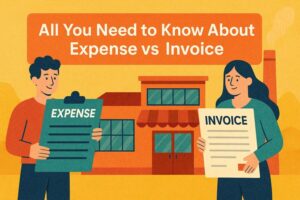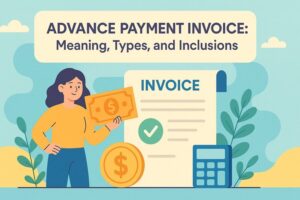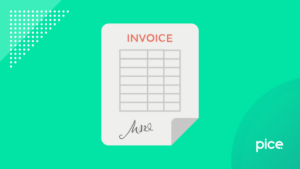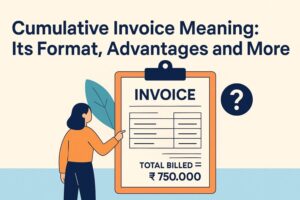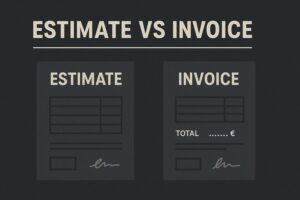What is the Difference Between an Invoice and a Cash Memo?
- 17 Nov 25
- 6 mins

What is the Difference Between an Invoice and a Cash Memo?
Key Takeaways
- The difference between invoice and cash memo lies mainly in the timing of payment—invoice for credit sales, cash memo for cash sales.
- Cash memos confirm immediate payment, while invoices show that payment is still due.
- Understanding the difference between invoice and cash memo is essential for GST compliance and avoiding filing errors.
- Invoices have specific mandatory fields under GST, whereas cash memos primarily document instant cash transactions.
- With stricter GST enforcement, knowing the difference between invoice and cash memo helps prevent penalties and record-keeping mistakes.
Businesses issue cash memos to keep a record of their purchases. It features the quantity of items bought, total volume of goods sold and the rate of supplies. On the other hand, invoices are time-specific documents that specify particulars of a business transaction if the supplies were provided on credit.
By 2024-25, the number of taxpayers required to generate e-invoices has expanded significantly due to lower turnover thresholds. To ensure compliance, it is crucial to know the difference between invoice and cash memo. Thereby, it helps avoid GST filing issues.
6 Key Differences Between Invoice and Cash Memo
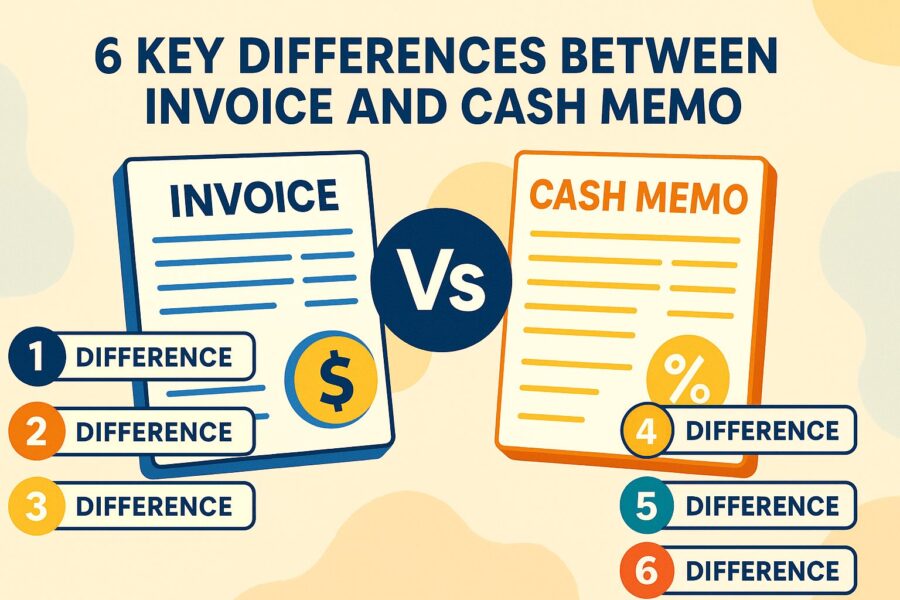
To distinguish between an invoice and a cash memo, go through this table:
| Parameter | Invoice | Cash Memo |
|---|---|---|
| Significance | Issued for credit sales, where payment is to be collected at a later date | Issued for cash sales, i.e., sales transaction, where payment is received immediately |
| Time of Issuance | Provided to the consumer before they make the payment, especially in the case of credit transactions | Generated after the cash payment made |
| Nature of Proof | Shows the consumer owes money | Serves as evidence of cash transaction made by consumer |
| Legal Implication | Points to a creditor-debtor relationship until the business receives the due amount | No particular status is reported as cash memos represent transactions settled in real-time |
| Accounting Treatment | Entered in the sales book (by seller) and purchase book (by buyer) | Entered in the cash book of the seller to track daily cash sales |
| Revenue Stamp | No revenue stamp is needed, regardless of amount | Revenue stamp is required if cash payment exceeds ₹500 |
💡For your bill payments and tracking business transactions, use the PICE App.
What Details Should an Invoice Contain?
Did you know that from 1st June 2025, all invoice numbers uploaded to the IRP are converted to uppercase and treated as case-sensitive? Thus, when issuing a GST-compliant invoice, the authorised person must exercise caution.
Additionally, the suppliers need to ensure that the following details are present:
- Business name and address
- 15-digit Goods and Services Tax Identification Number (GSTIN)
- Business contact details (email, phone number, WhatsApp, etc.)
- Invoice validity date
- Name and additional details of the buyer
- Shipping address (if it varies from the billing address)
- Description of supplies (name, HSN code, unit price, quantity, etc.)
- GST breakdown for applicable CGST, SGST, and IGST
- Terms and conditions administering the transaction
- GST QR code to authorise the invoice digitally
- Payment terms and due date of payment
- Total accounts payable
Note: From April 1, 2025, businesses will need to upload their GST e-invoices to the Invoice Registration Portal (IRP) within 30 days of issue.
What Details Should a Cash Memo Contain?
A standard cash memo format has all the below-mentioned specifics:
- Date of issuance
- Buyer’s name and address
- Supplier’s GST-registered name and address
- Cash memo’s serial number
- Number of goods involved in the transaction
- Description of the sold goods
- Unit rate of the supplies
- Sale amount
- GST registration number
- Signature of the entrusted official
- Discounts (if given)
- Applicable tax rate
- Total amount after adding the tax
- Terms and conditions
- Payment method used by the buyer
GST Invoice Penalties and Mistakes to Avoid
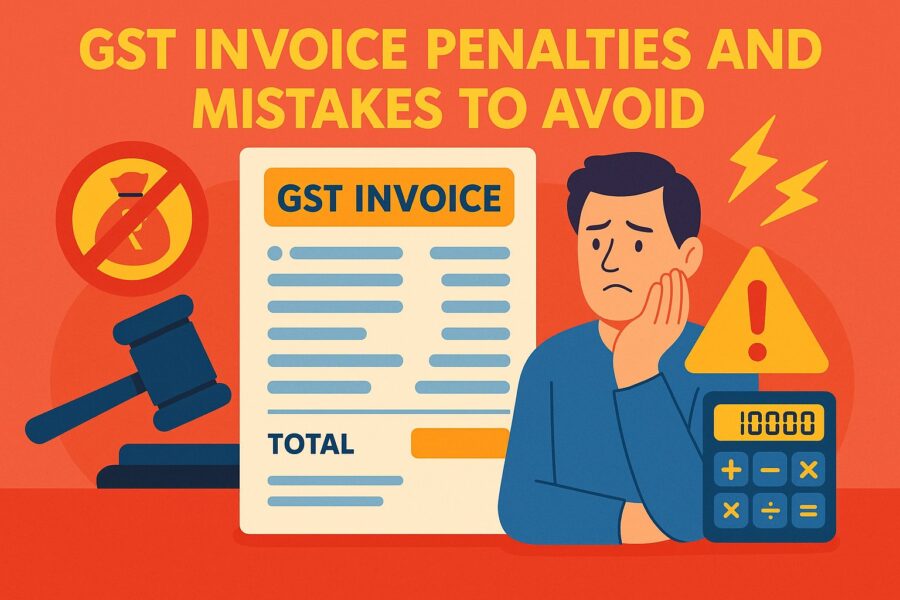
In the year 2025, GST enforcement will be tighter and a company can find itself facing high penalties in case of an invoice error or non-compliance. It is important to understand the penalties applicable and the fact that when recording sales, one needs to clearly understand the difference between invoice and cash memo.
As an example, the provision of goods or services without a satisfactory invoice is subject to a penalty of an amount of ₹10,000 or the amount of taxes recovered, whichever is greater. Any act of claiming or using false Input Tax Credit (ITC) incurs an equal punishment, a sum of ₹10,000 or the amount of tax, whichever is more.
Moreover, Section 122B has been amended and now imposes a penalty of ₹1 lakh or 10% of the tax liability, whichever is greater, in case of not following tax compliance with Track and Trace or e-invoicing requirements.
Late filing of GST returns incurs automatic late fees of ₹50 per day (₹25 CGST + ₹25 SGST), and for NIL returns, ₹20 per day. Besides, late payment attracts interest at an interest rate of 18% per annum. These significant or multiple offences can even result in prosecution, cancellation of GSTIN or even an order to close a business, which underlines the significance of proper and on-time GST invoicing and strict compliance.
Core Differences Between a Credit Invoice and a Credit Memo
Read on to understand the basic differences between the two commercial documents:
| Parameter | Credit Invoice | Credit Memo |
|---|---|---|
| Purpose | Issued to record a sale on credit or balance accounting records | Issued to correct or reduce a previously issued invoice |
| Reason to Issue | Generated to represent a sale on credit, payment due later | Supports a return of goods, overbilling, discounts, or other adjustments |
| Accounting Effect | Increases accounts receivable | Decreases accounts receivable |
| Impact on GST | Increases GST liability | Decreases GST liability |
In summary, a credit invoice increases the customer's outstanding balance by recording new sales on credit. Meanwhile, a credit memo is used to reduce that balance, reflecting adjustments like returns or discounts.
Conclusion
The difference between a credit tax invoice and cash memo is relevant to overall GST compliance and helps businesses run smoothly. On credit sales, an invoice is raised asking for payment on goods or services supplied, and initiates a creditor-debtor relationship. Contrarily, cash memos act as evidence of payment received with no creditor-debtor relationship being formed. Standard documentation and the knowledge of when to provide each of them prevent non-compliance and even probable GST fines.
 By
By 





